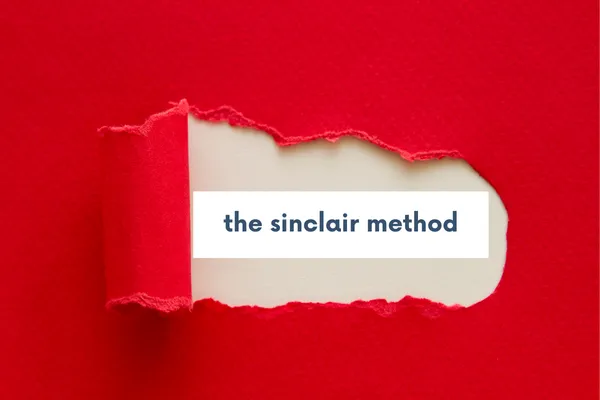
Rethink Drink Blog | Your Quit Lit Fix!
Get your quit lit fix with the Rethink Drink Blog, the go-to source for insights and guidance on overcoming alcohol dependency through The Sinclair Method (TSM); a scientifically-backed approach to alcohol recovery.
Here, we delve deep into the transformative journey of alcohol treatment, offering expert advice, success stories, and the latest research to support you or your loved ones in navigating the path to a healthier relationship with alcohol.
Our mission is to empower individuals with education, effective strategies and compassionate support, demonstrating why TSM is heralded as a groundbreaking solution in the realm of alcohol recovery.
Explore our blogs to discover how you can redefine your relationship with alcohol and embrace a future filled with hope and freedom.
... Have questions? Reach out to us here

Understanding the Sinclair Method: A Neurological Approach to Alcohol Recovery
Key Takeaways:
The Sinclair Method (TSM) uses Naltrexone to gradually reduce alcohol cravings by rewiring brain pathways.
It targets endorphin release linked to alcohol consumption, not through immediate abstinence.
The method is grounded in neuroscience, working via a process known as pharmacological extinction.
Understanding the role of endorphins and how they differ from dopamine reveals why drinking becomes compulsive.
TSM supports people with Alcohol Use Disorder (AUD) in a more flexible, sustainable way than traditional rehab.
What is the Sinclair Method?
The Sinclair Method is a revolutionary approach to treating Alcohol Use Disorder. Instead of requiring people to stop drinking immediately, it uses a medication — Naltrexone — to help gradually reduce alcohol cravings and dependency. Individuals take Naltrexone one hour before drinking, which blocks the opioid receptors in the brain and, over time, extinguishes the reward response to alcohol.
You can explore how we support recovery using TSM on our home page.
The Neurological Basis of the Sinclair Method
Alcohol triggers a powerful neurological response that reinforces the habit of drinking. Here's what happens when someone drinks:
Alcohol consumption causes the brain to release endorphins, which are feel-good chemicals.
These endorphins bind to the brain’s opioid receptors, producing feelings of pleasure and satisfaction.
As a result of this stimulation, the brain releases dopamine, a neurotransmitter that encourages repetition of rewarding behaviours.
Over time, the brain learns to associate alcohol with pleasure and relief, creating a reinforcing loop.
Naltrexone blocks the opioid receptors, which prevents the endorphin-driven reward and helps break the habit through a process known as pharmacological extinction.
This approach directly addresses the neurological condition at the core of AUD, rather than focusing solely on behavioural change.
Endorphins vs Dopamine: What’s the Difference?
Understanding the roles of endorphins and dopamine helps explain why alcohol can become so compulsive. While they both play a part in the brain’s reward system, they work differently:
Endorphins are the body’s natural opioids. They reduce pain and create feelings of pleasure. Alcohol stimulates their release, creating the euphoric “buzz” people associate with drinking.
Dopamine is the neurotransmitter responsible for motivation and reward-seeking behaviour. It makes you want to repeat whatever caused the pleasure — in this case, drinking.
In simple terms: endorphins make alcohol feel good, and dopamine makes you crave it again.
By targeting endorphins with Naltrexone, TSM breaks the cycle before dopamine can reinforce it.
Why Traditional Methods Sometimes Fall Short
Conventional recovery programmes often focus on abstinence, group therapy, or behavioural interventions. While these can be helpful, they may overlook the brain’s deeply ingrained chemical responses to alcohol. The Sinclair Method offers a more direct solution:
It doesn’t require complete abstinence from the start, reducing the pressure and fear of failure.
It treats Alcohol Use Disorder as a neurological condition, not a moral weakness or behavioural flaw.
It retrains the brain over time, leading to lasting results with less psychological resistance.
Many people find the process less stigmatising and more empowering than traditional rehab.
A Realistic, Flexible Approach
One of the most appealing aspects of the Sinclair Method is its flexibility. Unlike rigid abstinence-based models, it meets people where they are. Here's how it compares:
TSM allows continued drinking during treatment, which makes it less intimidating for many.
Naltrexone gradually reduces the brain’s association between alcohol and pleasure.
No group sessions are required, though support and coaching can enhance success.
The method is scientifically proven, with a success rate of up to 78% in long-term studies.
It’s a realistic, neuroscience-led alternative that respects individual autonomy while guiding sustainable change.
How We Support You
At Rethink Drink, we believe that everyone deserves compassionate, science-based support when navigating recovery. Our team is experienced in coaching individuals through the Sinclair Method, providing guidance and encouragement every step of the way.
If you're interested in learning whether this method might work for you, you can book a free screening call with us today.
You don’t have to face this alone — and you don’t have to give up hope.

